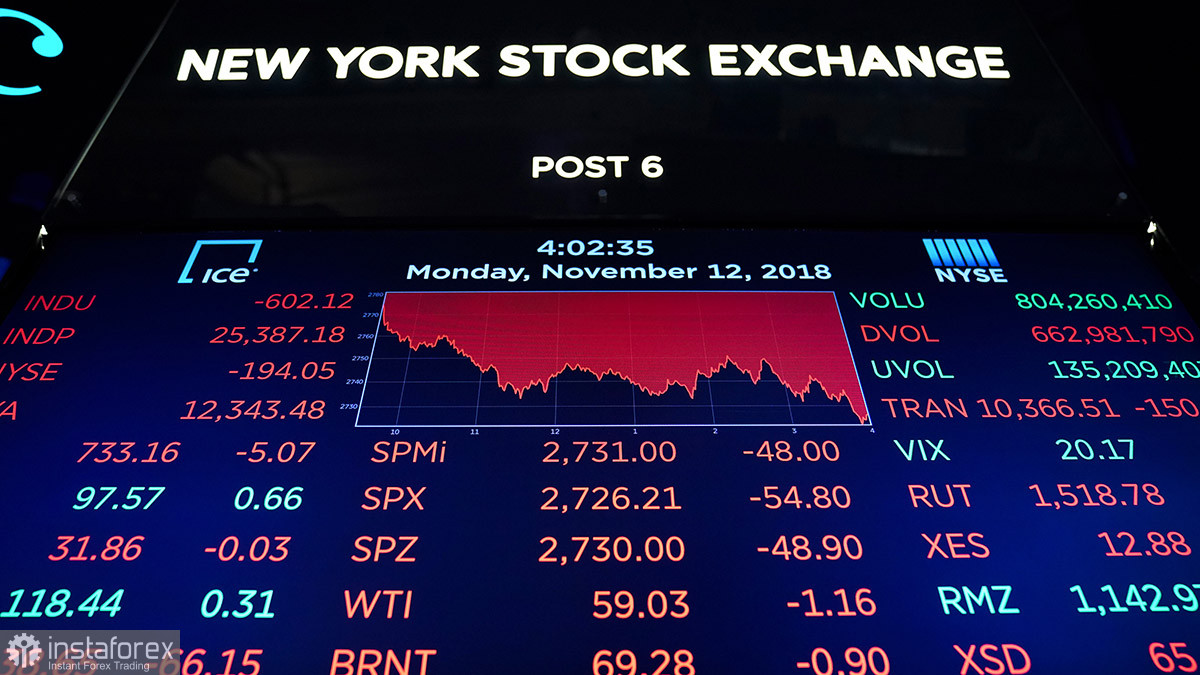
The key indices of the US stock market - Dow Jones, NASDAQ, and S&P 500 - ended Friday with another fall and another update of their lows. In principle, there was not a single really important event in the States on Friday. Yes, Jerome Powell's speech took place, but Powell also spoke on Wednesday, immediately after the announcement of the results of the Fed meeting. Yes, a report on industrial production was published, but this report is not a priority for investors now and its significance was not "shocking" and unexpected. And on Monday in the United States, it was a day off, so the stock market did not work. Thus, the trading week for stock indices and stocks has not even begun yet.
And it will start at the same local lows as part of a global correction. As we have said more than once, now the fundamental background looks like a huge ship rushing across the Atlantic at full steam. No, the story is not about an iceberg and a collision. The story is that it will take a lot of time to stop this ship, turn it around or change course. It's the same now with the Fed. The regulator has already set a course to raise the rate "to the bitter end", so it is hardly worth counting on the option when Powell will one day simply say that the regulator's plans have changed and there will be no more rate increases. Thus, monetary policy will be tightened further, at least until the end of 2022. And in addition to raising the rate, a quantitative tightening program will begin on July 1, which involves reducing the Fed's balance sheet by $ 95 billion monthly. This means that the excess money supply will be withdrawn from the economy, which is again bad for risky assets, which will be disposed of first of all in times of a difficult geopolitical situation and high inflation.
And now I don't even want to talk about inflation. If by the end of June this indicator does not begin to slow down, then it is generally difficult to imagine how much the rate should be increased. The next inflation report will be released only on July 13 and at the moment there are no forecasts for this indicator. In the last two months, we can say that the consumer price index has stopped accelerating, plus the Fed has already raised the rate to 1.75%. Thus, it is possible to expect a slowdown in the rate of price growth. But this will have absolutely no effect on the Fed's plans to bring inflation to 2% since now it is 8.6%. Therefore, the rate needs to be increased and increased. And the stock market in response to these actions of the regulator may still fall and fall.





















